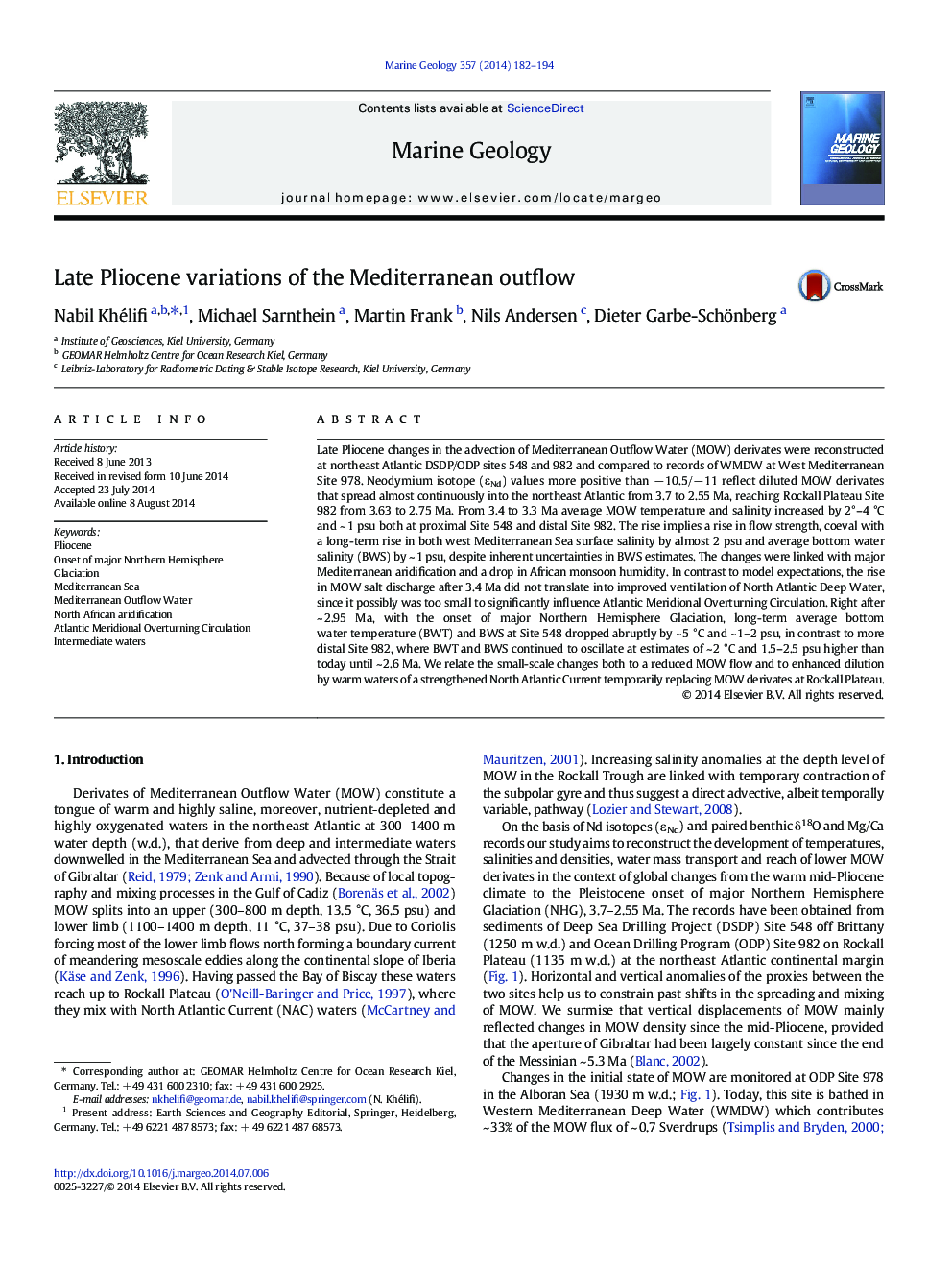| کد مقاله | کد نشریه | سال انتشار | مقاله انگلیسی | نسخه تمام متن |
|---|---|---|---|---|
| 6441607 | 1639095 | 2014 | 13 صفحه PDF | دانلود رایگان |
• Climate-driven Late Pliocene changes in MOW injection into the Atlantic
• Vertical shifts of Pliocene MOW tongue along N.E. Atlantic continental margin
• Role of MOW salt discharge for North Atlantic Meridional Overturning Circulation
Late Pliocene changes in the advection of Mediterranean Outflow Water (MOW) derivates were reconstructed at northeast Atlantic DSDP/ODP sites 548 and 982 and compared to records of WMDW at West Mediterranean Site 978. Neodymium isotope (εNd) values more positive than − 10.5/− 11 reflect diluted MOW derivates that spread almost continuously into the northeast Atlantic from 3.7 to 2.55 Ma, reaching Rockall Plateau Site 982 from 3.63 to 2.75 Ma. From 3.4 to 3.3 Ma average MOW temperature and salinity increased by 2°–4 °C and ~ 1 psu both at proximal Site 548 and distal Site 982. The rise implies a rise in flow strength, coeval with a long-term rise in both west Mediterranean Sea surface salinity by almost 2 psu and average bottom water salinity (BWS) by ~ 1 psu, despite inherent uncertainties in BWS estimates. The changes were linked with major Mediterranean aridification and a drop in African monsoon humidity. In contrast to model expectations, the rise in MOW salt discharge after 3.4 Ma did not translate into improved ventilation of North Atlantic Deep Water, since it possibly was too small to significantly influence Atlantic Meridional Overturning Circulation. Right after ~ 2.95 Ma, with the onset of major Northern Hemisphere Glaciation, long-term average bottom water temperature (BWT) and BWS at Site 548 dropped abruptly by ~ 5 °C and ~ 1–2 psu, in contrast to more distal Site 982, where BWT and BWS continued to oscillate at estimates of ~ 2 °C and 1.5–2.5 psu higher than today until ~ 2.6 Ma. We relate the small-scale changes both to a reduced MOW flow and to enhanced dilution by warm waters of a strengthened North Atlantic Current temporarily replacing MOW derivates at Rockall Plateau.
Journal: Marine Geology - Volume 357, 1 November 2014, Pages 182–194
